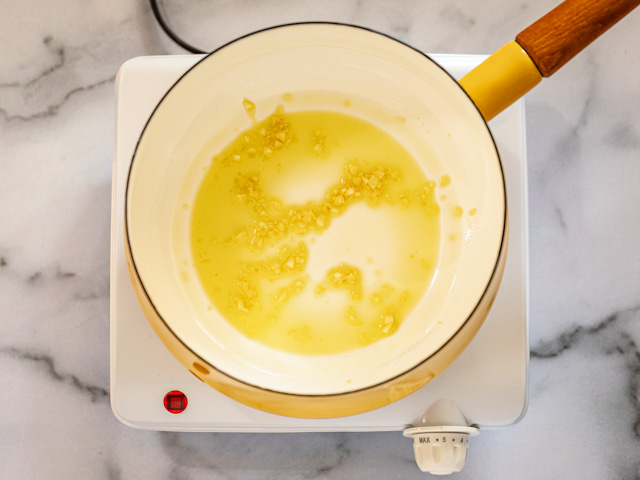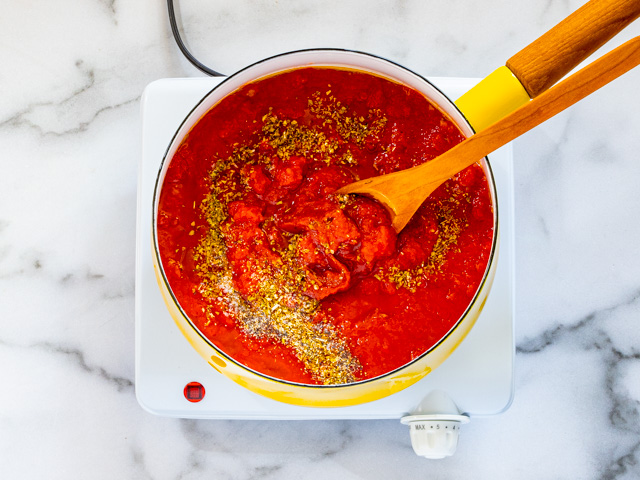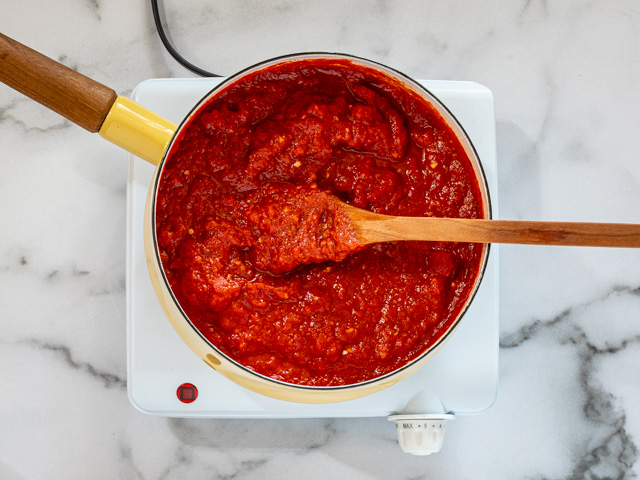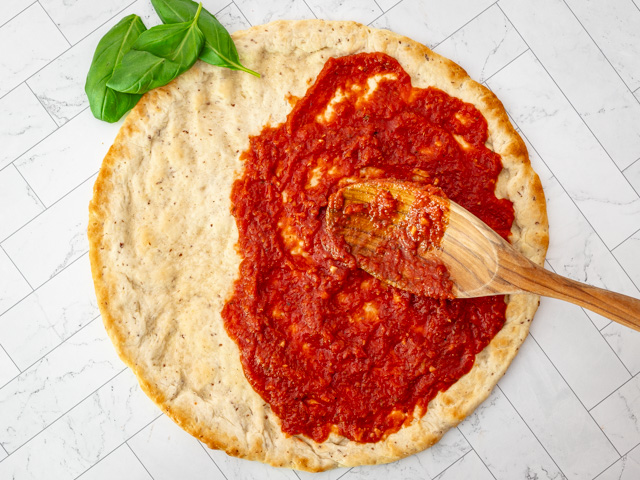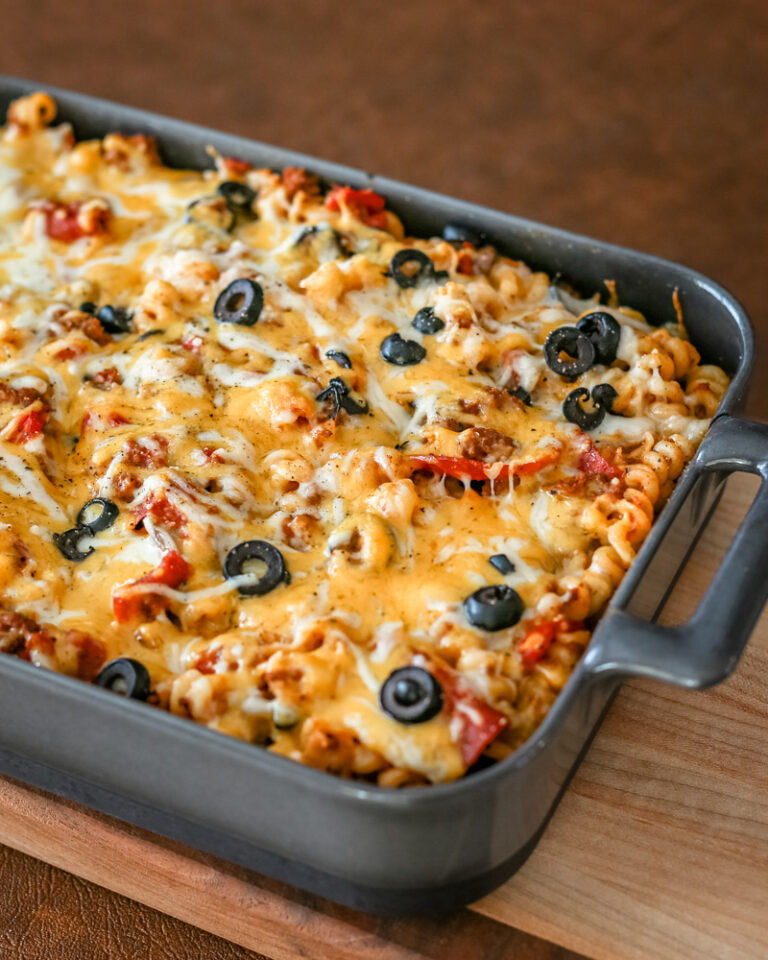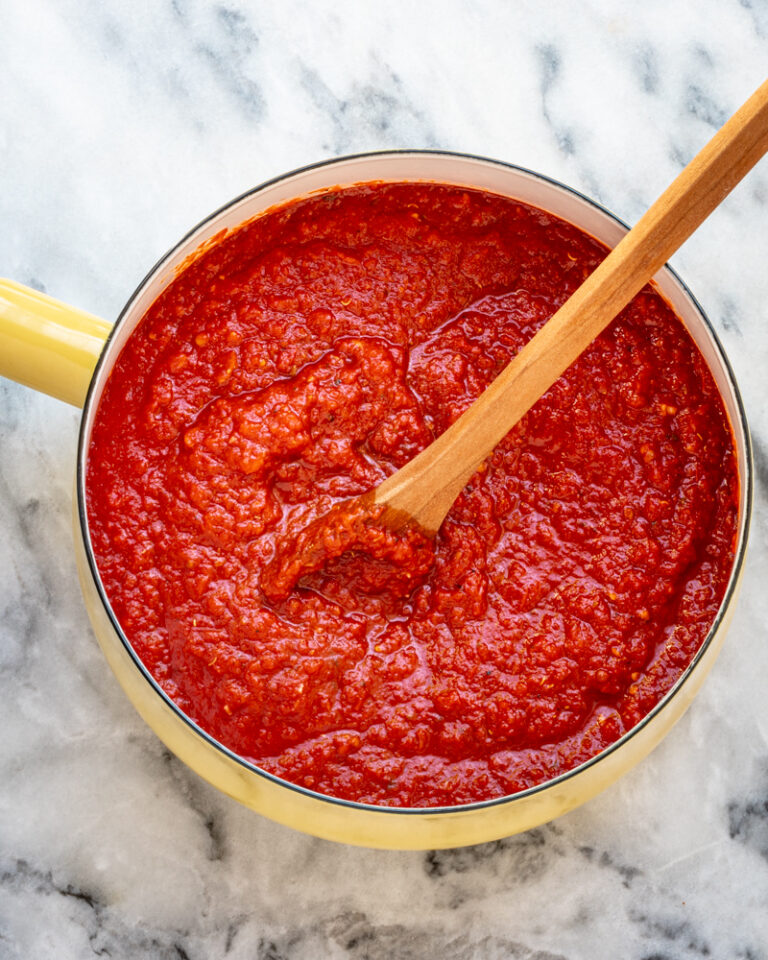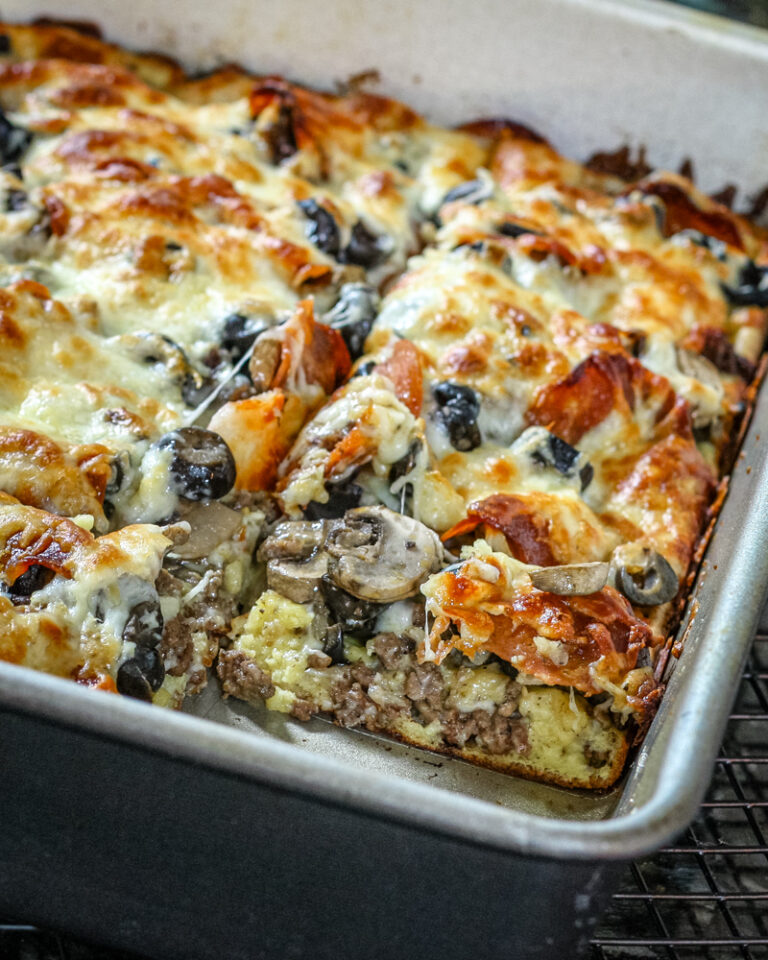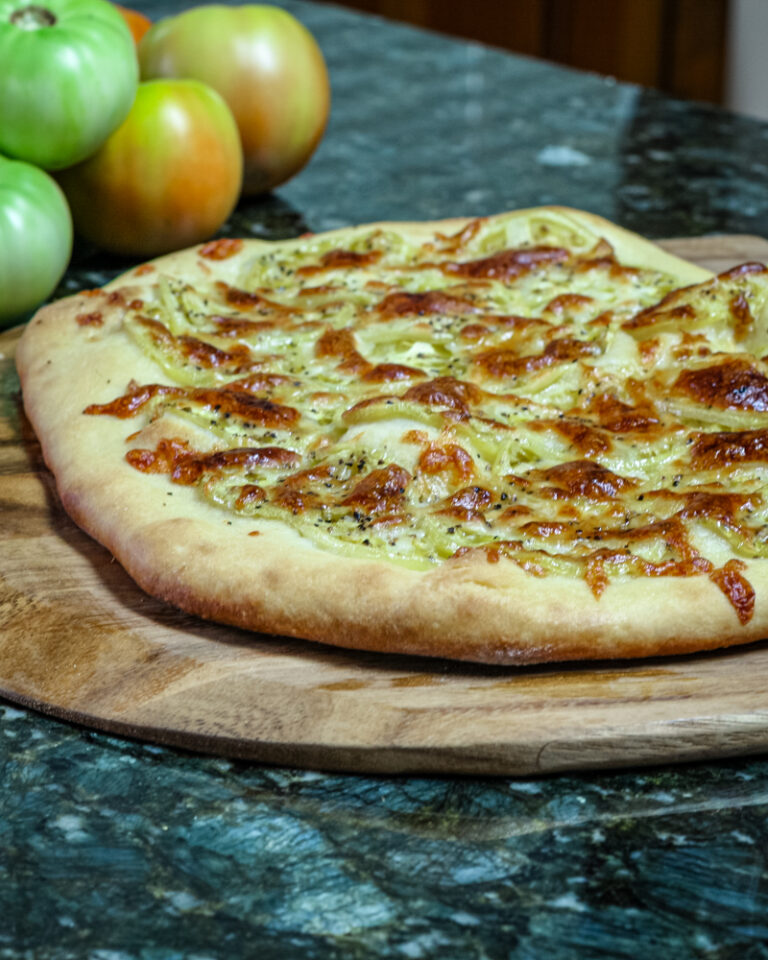Homemade Pizza Sauce
Make your own delicious and versatile pizza sauce at home. With just a few simple ingredients, you can create a flavorful sauce for all your pizza creations.
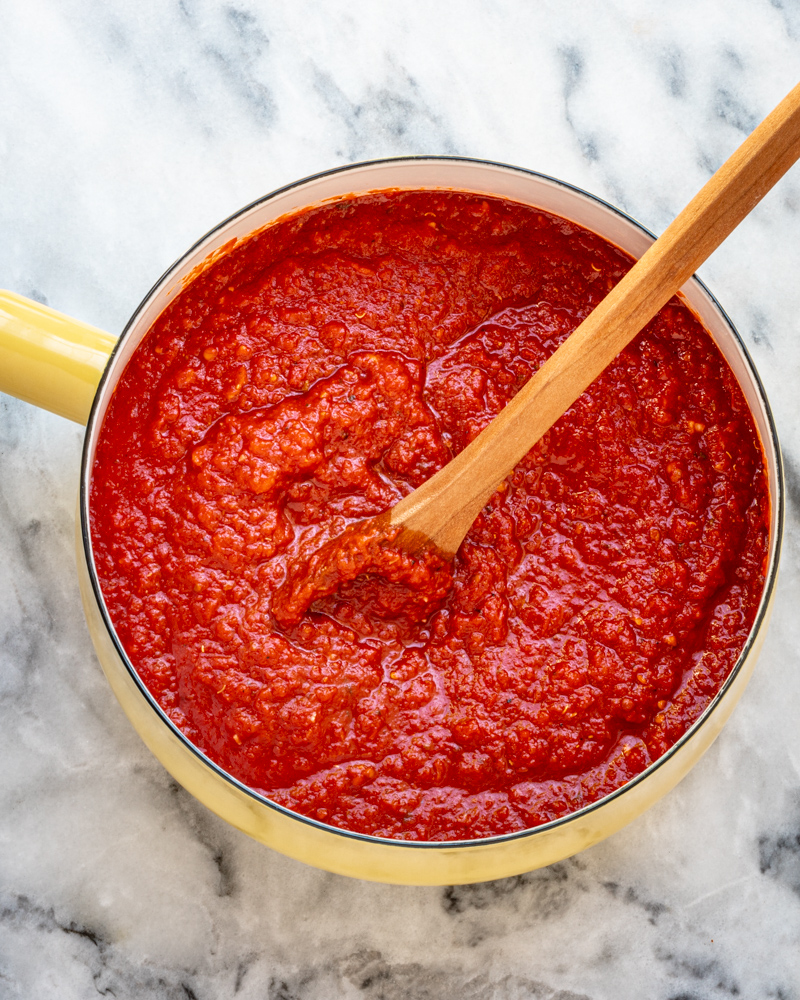
This easy homemade pizza sauce simmers to perfection in 15 minutes. It’s a delicious sauce to spread over homemade pizza dough or a store-bought crust. Use it to make a Margherita pizza, or pile on your favorite meaty toppings. The richness of tomato paste and crushed tomatoes with sautéed garlic and seasonings makes a smooth and perfect red sauce. Besides pizza, there are many other ways you can use the sauce.
Why You’ll Love It
Quick and easy. The sauce takes just 15 minutes from start to finish, with no complicated steps.
Made from pantry staples. You only need a few basic ingredients like garlic, tomato paste, and oregano.
Versatile and freezer-friendly. Use it for pizza, pasta, casseroles, dipping, and more—plus it freezes beautifully!
Ingredient Notes
- Crushed tomatoes: Choose a good-quality 14.5-ounce can for best flavor and texture.
- Tomato paste: Adds thickness and a concentrated tomato flavor.
- Garlic: Freshly minced garlic adds a bold, aromatic foundation.
- Oregano: Dried oregano brings the classic pizza sauce flavor.
- Sugar: Just a pinch to balance acidity.
- Salt and pepper: Start with less and adjust to taste.
Steps to Make Homemade Pizza Sauce
- Heat olive oil in a saucepan and sauté the garlic briefly until softened and fragrant.
- Stir in the crushed tomatoes, tomato paste, sugar, oregano, salt, and pepper until blended.
- Bring the mixture to a simmer, then reduce the heat and cook gently for about 10 minutes to thicken and develop flavor.
- Use immediately or let cool and store for later. Spread the sauce over pizza dough and top as desired.
Recipe Variations
- Spicy: Add red pepper flakes for a hot and spicy arrabbiata pizza sauce.
- Marinara: The sauce makes a fabulous marinara sauce. Sauté 1/2 cup of onions with the garlic and add some dried basil to taste.
- Roasted Garlic: Instead of sautéed garlic, add 2 cloves of roasted garlic to the sauce for a stronger garlic flavor.
More Ways to Use Pizza Sauce
- Dipping Sauce: Serve it alongside fried mozzarella, chicken strips, tortilla rolls, wings, or pesto pinwheels.
- Casseroles: Make a pizza casserole or baked pizza dip.
- Pasta: Replace your favorite jar of sauce with it or use it to make this one pot spaghetti dinner.
- Meatloaf Glaze: Brush over a meatloaf just before it’s done, or add some to a meatloaf mixture.
- Chicken or Eggplant Parm: Use it as a sauce on your eggplant Parmesan or chicken Parmigiana.
How to Store and Reheat
Refrigerate: Cool the sauce completely and store in an airtight container in the fridge for up to 5 days.
Freeze: Freeze in portions using airtight containers or freezer bags for up to 3 months. Label with date and thaw in the fridge overnight.
To Reheat: Rewarm in a saucepan over low heat, stirring occasionally, or microwave in a heat-safe bowl in short bursts.
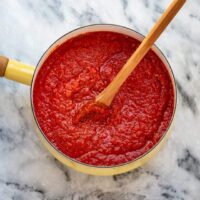
Homemade Pizza Sauce
Ingredients
- 1 tablespoon extra-virgin olive oil
- 2 medium cloves garlic, minced
- 1 14.5-ounce can crushed tomatoes
- 4 tablespoons tomato paste
- 1/2 teaspoon granulated sugar
- 1/2 teaspoon dried leaf oregano
- 1/2 teaspoon Diamond kosher salt, or to taste
- 1/4 teaspoon ground black pepper
Instructions
- Sauté: Heat the oil in a saucepan over medium heat. Add the garlic and sauté for 2 minutes, or until it is softened.
- Combine: Add the crushed tomatoes, tomato paste, sugar, oregano, salt, and pepper to the saucepan and stir to blend.
- Simmer: Bring the pizza sauce to a simmer. Reduce the heat to low and simmer for 10 minutes. Refrigerate or freeze the cooled sauce or use it immediately.
- To Use: Spread the sauce over a round of raw or store-bought pizza dough and cover with your choice of toppings. Bake following your pizza dough or crust recipe instructions.
Nutrition
Disclaimer:
Our nutritional information is based on a third-party application that analyzes the ingredients list to determine the values. The information is meant to be helpful, but should be considered an estimate. Values may differ depending on measurements, brands, serving variations, and database availability.

